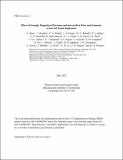| dc.contributor.author | Bose, A. | en_US |
| dc.contributor.author | Peebles, J. | en_US |
| dc.contributor.author | Walsh, C.A. | en_US |
| dc.contributor.author | Frenje, Johan A. | en_US |
| dc.contributor.author | Kabadi, Neel V. | en_US |
| dc.contributor.author | Adrian, Patrick J. | en_US |
| dc.contributor.author | Sutcliffe, G.D. | en_US |
| dc.contributor.author | Gatu Johnson, Maria | en_US |
| dc.contributor.author | Frank, C.A. | en_US |
| dc.contributor.author | Davies, J.R. | en_US |
| dc.contributor.author | Betti, R. | en_US |
| dc.contributor.author | Glebov, V.Yu. | en_US |
| dc.contributor.author | Marshall, F.J. | en_US |
| dc.contributor.author | Regan, S.P. | en_US |
| dc.contributor.author | Stoeckl, C. | en_US |
| dc.contributor.author | Campbell, E.M. | en_US |
| dc.contributor.author | Sio, H. | en_US |
| dc.contributor.author | Moody, J. | en_US |
| dc.contributor.author | Crilly, A. | en_US |
| dc.contributor.author | Appelbe, B.D. | en_US |
| dc.contributor.author | Chittenden, J.P. | en_US |
| dc.contributor.author | Atzeni, S. | en_US |
| dc.contributor.author | Barbato, F. | en_US |
| dc.contributor.author | Forte, A. | en_US |
| dc.contributor.author | Li, Chi-Kang | en_US |
| dc.contributor.author | Séguin, Frederick H. | en_US |
| dc.contributor.author | Petrasso, Richard D. | en_US |
| dc.date.accessioned | 2025-03-21T20:20:52Z | |
| dc.date.available | 2025-03-21T20:20:52Z | |
| dc.date.issued | 2022-05 | |
| dc.identifier | 22ja012 | |
| dc.identifier.uri | https://hdl.handle.net/1721.1/158699 | |
| dc.description | Submitted for publication in Physical Review Letters | |
| dc.description.abstract | This Letter presents the first observation on how a strong, 500 kG, externally applied B field increases the mode-two asymmetry in shock-heated inertial fusion implosions. Using a direct-drive implosion with polar illumination and imposed field, we observed that magnetization produces a significant increase in the implosion oblateness (a 2.5× larger P2 amplitude in x-ray self-emission images) compared with reference experiments with identical drive but with no field applied. The implosions produce strongly magnetized electrons (ωeτe ≫ 1) and ions (ωiτi > 1) that, as shown using simulations, restrict the cross field heat flow necessary for lateral distribution of the laser and shock heating from the implosion pole to the waist, causing the enhanced mode-two shape. | |
| dc.publisher | APS | en_US |
| dc.relation.isversionof | doi.org/10.1103/physrevlett.128.195002 | |
| dc.source | Plasma Science and Fusion Center | en_US |
| dc.title | Effect of Strongly Magnetized Electrons and Ions on Heat Flow and Symmetry of Inertial Fusion Implosions | en_US |
| dc.type | Article | en_US |
| dc.contributor.department | Massachusetts Institute of Technology. Plasma Science and Fusion Center | |
| dc.relation.journal | Physical Review Letters | |
